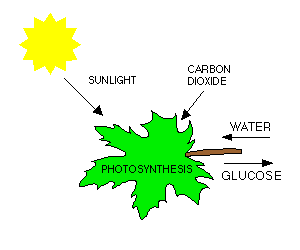Here’s the most beautiful parks in the world. As we know that one of the important element of a city is a park. Without any park, a city won’t get enough fresh air. So people in the world try to make a beautiful parks that also will server as a lung for the city. Here’s the most beautiful parks in the world that come from various countries, most of them located in United States.
Butchart Gardens, Victoria, British Columbia, CanadaHundreds of Thousands of flowers bloom in various colors in this horticultural wonder. Flowers such as pansies, scillas, daphnes, and forsythis all lined up to form a magnificent scenery.
Keukenhof, The Netherlands
Tulip is the national symbol of Holland and appeared in various Dutch history. Princess Maxima (with the help of the Russian president’s wife) led the opening of Keukenhof Garden. More than 7 million Tulips flower in 100 species is planted by hand every year on 80 hectares of garden area.Golden Gate Park, San Francisco, United States
San Francisco is indeed a paradise for travelers. In Golden Gate Park, San Francisco many flowers from many different countries grown here. Like the Dutch tulip flowers, California native flowers, roses, Shakespeare flower, and even the original flowers of that area.
Royal Botanic Gardens, Kew, England
This flower garden used to be called with Kew flower garden and has an area of more than 300 hectares and a garden which has the largest plant collections in the world. In this garden, spring means the explosion of more than 5 million of the colorful light bulbs. The garden is more than 250 years old with tulips, daffodils, crocuses, irisis, snowdrops, and bluebells. Along with the arrival of spring, the visitors could see the flowers violas, pansies, nasturtiums and so forth.
The New York Botanical Garden, United States
The Bronx is a tropical paradise every spring in the orchid show event held every year.
Mirabell Palace, Salzburg, Austria
This garden is famous by the movie “The Sound of Music”. This park has the style of Baroque style from the era of the 17th century and has a row of purple flowers colored yellow, white, people, pink, and red. Do not be surprised if this garden inspire you to create a song.
Chanticleer, Wayne, Pennsylvania
This flower garden was once the private property of the offspring of Rosengarten, which means rose garden in Germany. This family gave this park so that It belongs to the public to be enjoyed every day. This flower garden has tulips, daffodils, and some flowering trees and vines, and several other flowers such as lilies, alium, and so on.
The Huntington Botanical Gardens, San Marino, California
This flower park located outside Los Angeles and has been modified from farmers workplace to be a heaven for flower lovers. This park is possessed more than 14,000 types of plants such as lily flower, and roses. Also do not miss the flowers from subtropical countries and Australia.
Grant Park, Chicago, Illinois, United StatesGrant Park has always been a public property and the It’s for free. This is a gift because this park is located in the city center which is located between the busy district with Lake Michigan.
The Missouri Botanical Garden, St. Louis, Missouri, United States
First Built in 1859, an area of 79 hectares was spoiling their visitors with stunning scenery, beautiful flowers and colorful. This park have a Japanese nuance and attract a lot of people from foreign countries to visit.
The Dallas Arboretum, Dallas, Texas, United StatesThis park is still a young park Newly formed less than 30 years ago. The best place is in the Jonsson Color Garden, where tulips, daffodils, all waiting for you there.
This park is included in the list of “1000 places you should visit before you die”. Lot of tulips, daffodils, and so forth here.
The United States Botanic Garden, Washington, D.C.
When the congress planned in 1820 to make this park as a national park, it is a dream that come true. Today, the oldest national park located in United State’s capital is visited by 1 million people every year. This park is created from such various interested situations.
Suzhou Park, China
Suzhou garden has an oriental classic style as characteristics of China. The park built since the 11th century. Lingering Garden is the most famous part of the park, filled with bonsai plants, rocks, waters, and historic buildings.
























 microprocessor
microprocessor




